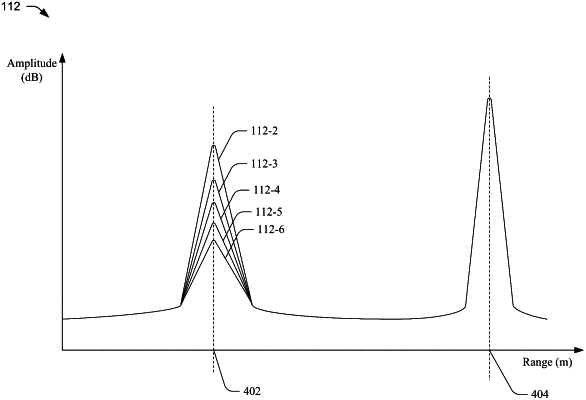| CPC G01S 13/536 (2013.01) [G01S 7/354 (2013.01); G01S 13/56 (2013.01); G01S 7/356 (2021.05)] | 20 Claims |

|
1. A system comprising a processor configured to:
direct a radar system to generate, for each frame of a plurality of frames, radar signals having a repeating chirp pattern that has a first period of multiple chirps followed by a second period of idle time for each frame of the plurality of frames, the second period of idle time being longer than the first period of multiple chirps;
determine a respective amplitude of reflections of the radar signals as a function of range for a plurality of ranges from the radar system for each of the plurality of frames such that each frame of the plurality of frames has a corresponding respective amplitude of reflections associated with the frame at each range of the plurality of ranges;
determine a standard deviation in the respective amplitude of the reflections across the plurality of frames for each range of the plurality of ranges such that each range of the plurality of ranges has an associated standard deviation;
compare the associated standard deviation for each range of the plurality of ranges with a noise threshold to determine whether the associated standard deviation for at least one range of the plurality of ranges is greater than the noise threshold; and
in response to determining that the associated standard deviation for at least one range of the plurality of ranges is greater than the noise threshold, output an indication of a living object detected during the plurality of frames.
|